Features
Meet The Collage Artist Behind Anderson .Paak’s Incredible Visuals
By Brogues - 5 min read
Visual artist Simone Cihlar told us why good humans and slow growth are key to creating work with integrity.
Simone Cihlar has come a long way since making her first “serious” collage five years ago. From her graphic design roots to a lengthy stint with concert photography, the Berlin-based artist is now earning worldwide acclaim for her collage work – perhaps most distinctively through the breathtaking visuals she creates for acclaimed singer/rapperAnderson .Paak.
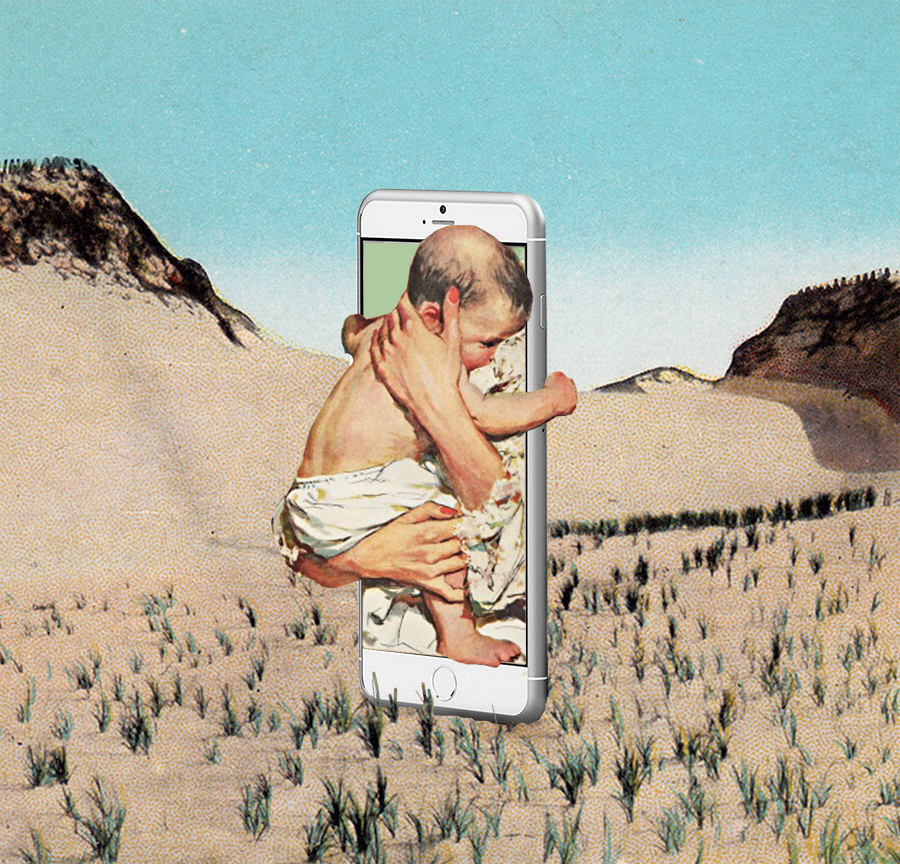
“Smartphone Baby” © Simone Cihlar
“Cutting things out enabled me to visualize my emotions, feelings and ideas.”
When and how did you get into collage?
I’ve always collected old newspapers and things, but never got around to collaging properly. Five years ago, I was living with six other creatives and we always spent a lot of time in our kitchen – one day I was sitting there and suddenly got the urge to start cutting things out. I made three collages and I still like them today. I’d say that’s where it all started.
Did you have any formal arts education or are you completely self-taught?
I studied graphic design for years and was also focused on analog photography. I was never into programs like Photoshop, Illustrator or InDesign, nor was I good at using them! So, I tried to find the easiest way – and that’s why I started to make collage totally cut and paste style, all by hand. I cut things out in order to visualize my ideas; I was able to translate all of my emotions and feelings into one visual language.
I really liked working that way because of its limitations: if you’re looking through internet material, the possibilities are almost too vast and it can become overwhelming. Even now, after five years, I’m working with the same 20 books and creating all of my collages with them. I like that it’s limited, and I like that sometimes it takes a lot of time – I’ve been keeping some cutouts for years, just waiting to come up with the collage idea that fits.
“In the end, the result is what’s most important.”
Could you talk a bit more about your process? Do you still create exclusively in cut-and-paste style, or are you using programs like Photoshop now?
Sometimes I have the idea in my head and it all comes together really fast. OccasionallyI have a piece in mind, but I don’t have the picture – so I go to the library and ask for very specific images, like a mountain from a specificperspective.
When it comes to using programs, it really depends on the piece. I enjoy cutting things out by hand, because nowadays we spend so much time in front of screens. Sure, you can get totally lost in front of a computer, but it’s different when you get lost doing something with your hands.
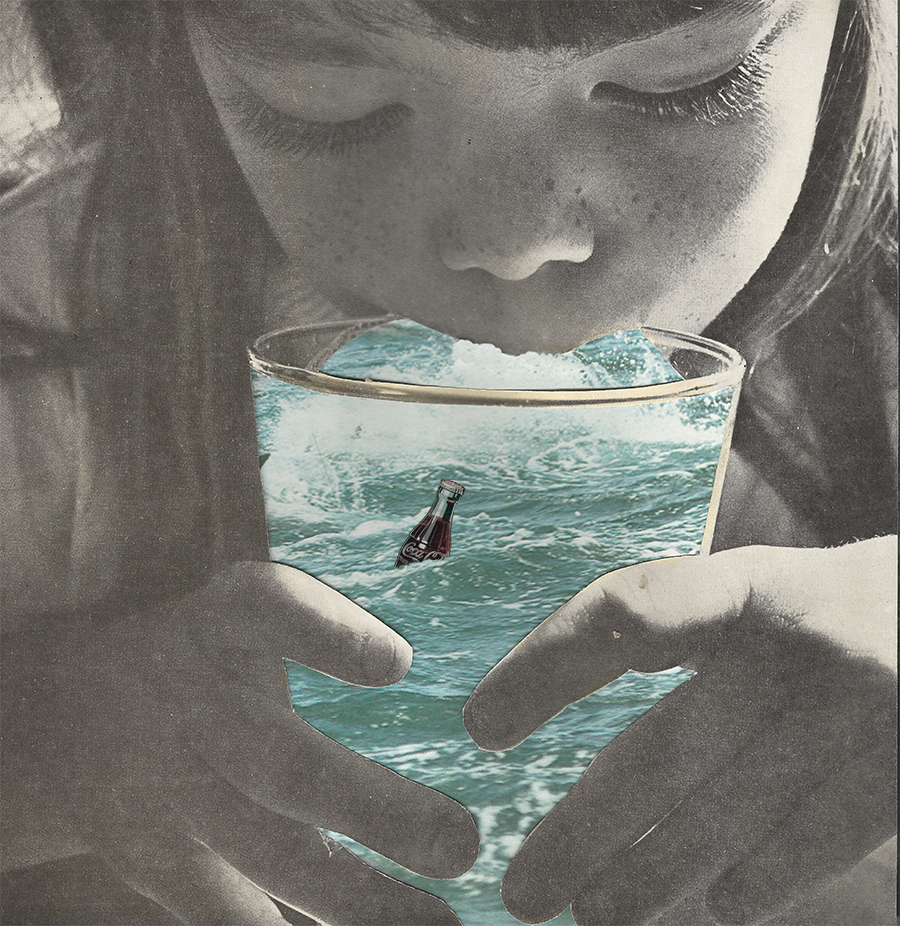
“Wasser ist die Quelle des Lebens” © Simone Cihlar
It can be harder and more time-consuming to make a good collage just by cutting things out, though, because you can’t play with proportions as much – you have to take an object’s size as it is. As I get better at using Photoshop, I like the advantage that I can scale things. Although I tend to take handmade collages more seriously and perceive them more as “real” art, I love how quickly I can translate my ideas and see results using Photoshop.
Do have a preference between photoshopped and handmade collages?
Both give me energy and the feeling that I’ve accomplished something. In the end, the result is what’s most important: if I like the result, I don’t care whether I did it on Photoshop or using paper cutouts. Saying that, I do feel the value is higher with a handmade piece because it’s a bit harder to work with a limited selection of images and sizes.
“I immediately liked Anderson as a person, so it was very easy to get into his flow.”
Many people will recognize your work from Anderson .Paak’s distinctivevisuals. How did the collaboration come about?
We were both backstage at Splash! Festival one year, then we just started chatting and connected straight away – somehow the topic of collage came up and I told him I was working with the medium.
Since then, we’ve really connected on an emotional and professional level. He’s one of the best clients I’ve ever worked for. Most importantly, we mutually respect, trust and have fun with each other. Having a good time with people and enjoying each other’s company is a great motor and base for creating the most honest work.
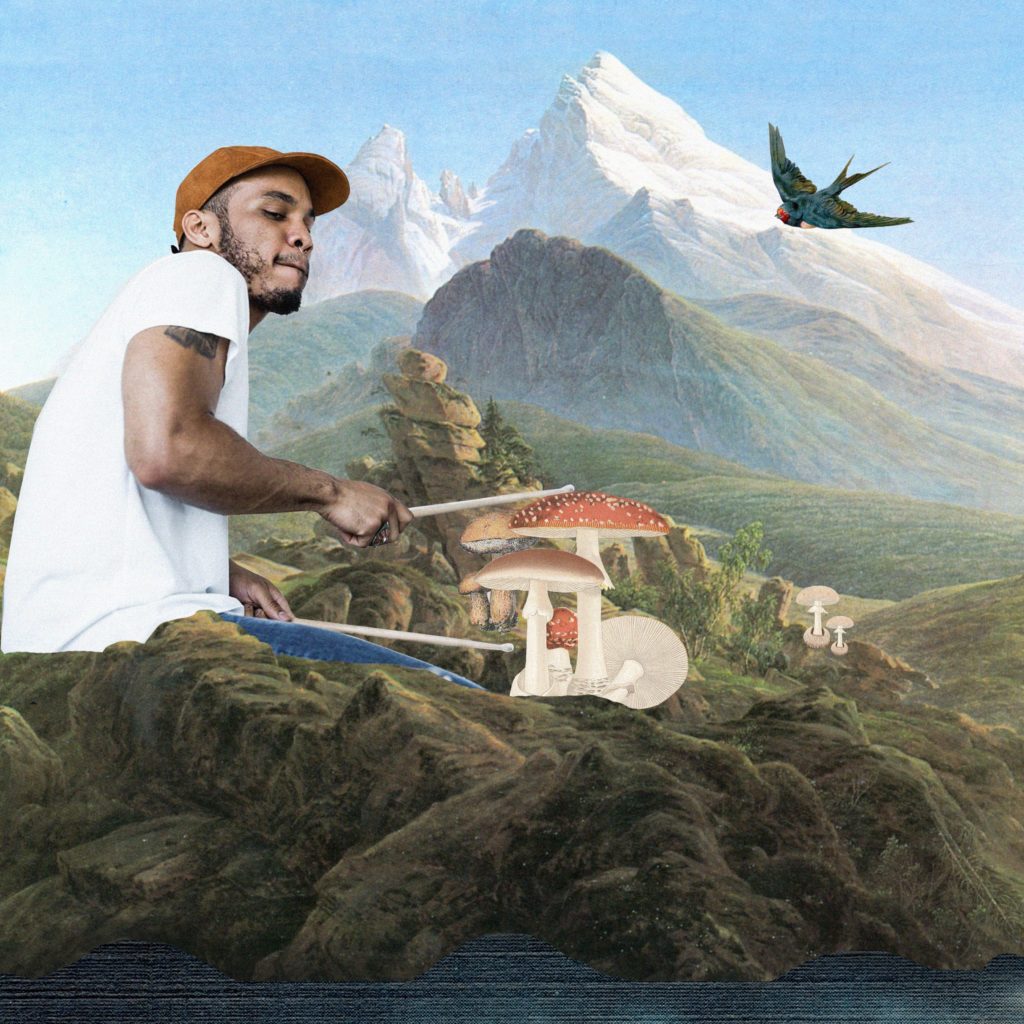
“Breezy Drums” © Simone Cihlar
Choosing the right humans to collaborate with is essential to the quality of your work, then?
If you like a person, you’re way more motivated to impress them. For example, if I have a client who I don’t enjoy working with, I’m less into it and don’t care as much if they don’t like me. With Anderson, though, it’s so easy and enjoyable working with him because he totally trusts me. I immediately liked him as a person, so it was very easy to get into his flow.
“Having a good time with people is a great motor for creating the most honest work.”
Mutual respect is honestly the best base you can have: if you’ve got the trust of your client, or fellow artist, what more could you want? I’m a lucky girl and in a nice position, because I’m still hanging out with people I’ve worked with.
The energy you send out really does come back to you. One day I just decided not to work for jerks anymore! Now I’m only working with people I personally respect and it makes a massive difference to my work: it’s real and comes from a genuine place.
Anderson .Paak’s Instagram profile is probably one of the most consistent and visually captivating around. Could you tell us a bit more about what your working process looks like?
When I’m working with him it’s mostly digital because of the fast turnaround. Most of the time we just chat via iMessage: he sends me pictures or concepts he wants to communicate, then I start using my imagination and cutting things out. I’m really free creatively because of the trust between us. We communicate very openly with each other, which in turn generates the best work!
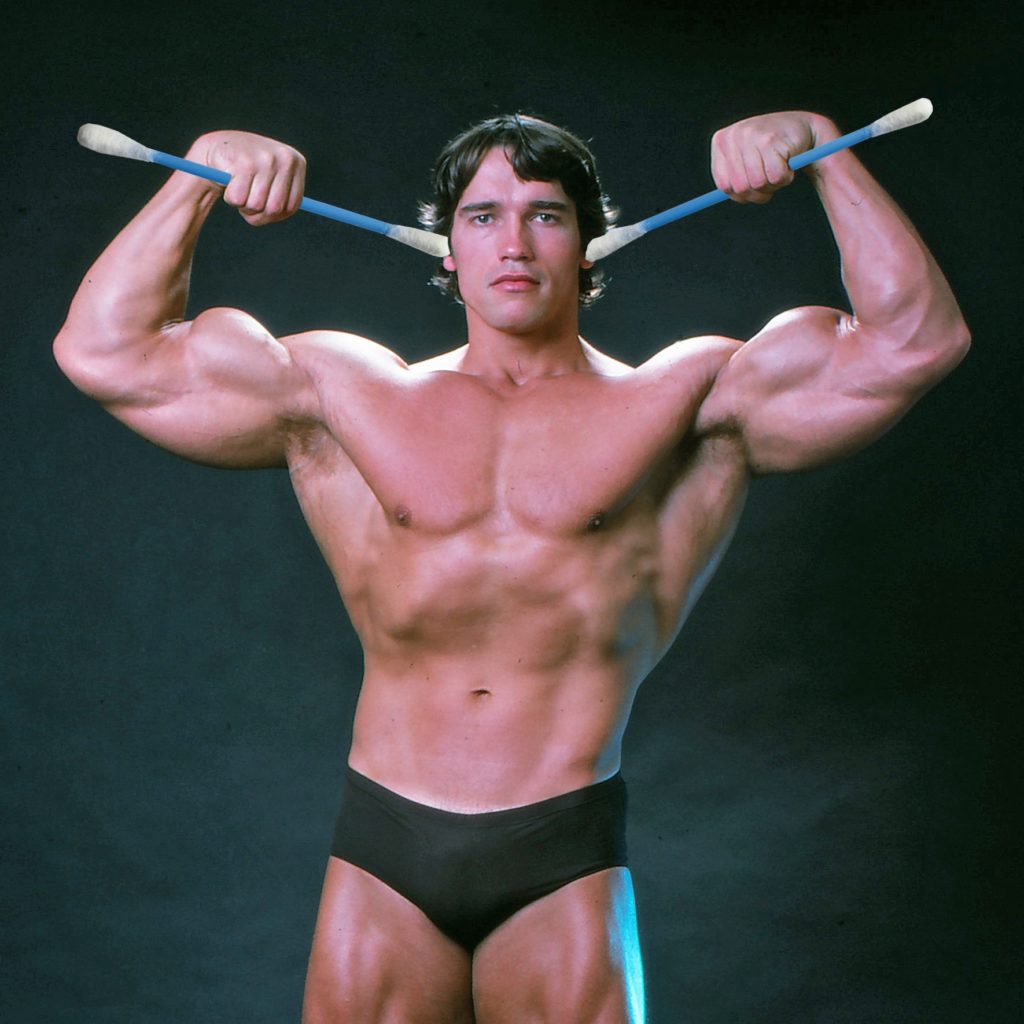
“Arni” © Simone Cihlar
“The energy you send out really does come back to you.”
You produce work for Berlin-based music label Jakarta Records too.Music seems to be an area you’re drawn towards!
It’s funny, I don’t play a single instrument but have always been obsessed with music and the music scene. During my youth, I was always looking at album booklets and enjoying the cover art – but I couldn’t have imagined I’d be able to work in the industry without any musical knowledge.
I was also a concert photographer for about five years, but I eventually grew disillusioned with it; I started to feel I was always looking through the viewfinder and never present, never really living in the moment.
Music and art are a natural fit with each other, though. I have this artistic soul; I’m always somewhere between super happy or depressed, sometimes I hate what I do and other times I love it – I feel like I have this in common with lots of other artists.
Jakarta Records is a family thing. I’ve known [founders] Jannis and Malte for a long time and we’ve been working together for over six years. They’ve taken care of and supported me from the beginning. They’re professional, humble, and I’m really obsessed with their music and artists!
“Just do. And keep doing.”
Where do you see your work going in the future?
On the one hand, I love serendipity: being open to momentsthat happen along the way, rather than having a strict goal or outcome in mind. But on the other hand, I’m sort of missing photography after quitting a few years ago. So perhaps the next step will be to integrate my own photography into collages!
I also did my first music video for [German rapper] Goldroger recently and it was crazy to see my collage moving for the first time – I can imagine this is a direction my work could go in, too.
“Slow growing makes the most sense.”
Finally, do you have any advice for anyone who wants to make a living from their art but isn’t sure where to start?
Just do. And keep doing. There’s a lot of creatives I’ve known since I was like 14 or 15 – I’m 30 now – and all of them can live off their art, whether graffiti artists or photographers. They just kept doing their thing. You could get successful in one year, maybe ten, but constantly working on yourself and not getting too caught up in external influences is key. For me, slow growing makes the most sense.
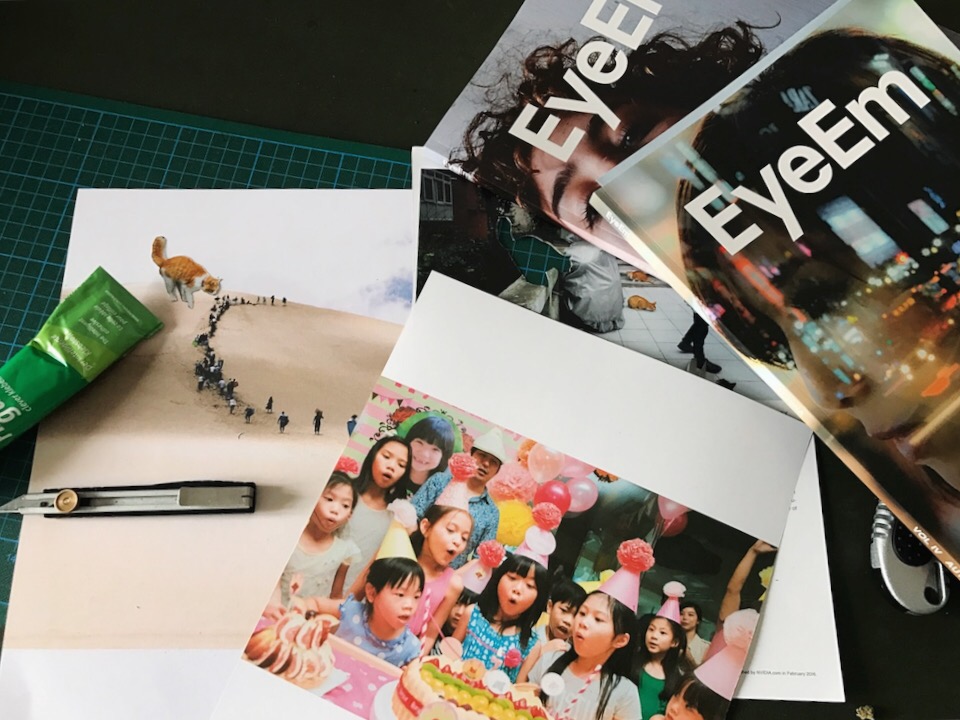

Simone created “Cat” using@satirerose‘s photo, cut out from EyeEm Magazine Vol. IV.
You can see more via @simone_cihlar on Instagram.
